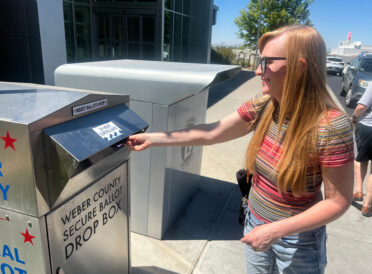Guest opinion: Immigration is forging a debate once again

Vijay K. Mathur
It appears that the immigration debate never ends. In 2015 I published an opinion piece in the Standard Examiner titled “A toxic debate on illegal immigration”, where I expressed the hope that both political parties would compromise and work out a bi-partisan bill on immigration to design sensible policies dealing with immigration: policies that are practical to implement and fulfill the needs of all institutions that depend on immigrants, skilled as well as unskilled. At that time Mr. Trump’s concern that criminals and rapists were entering the country illegally could have been addressed in new policies that could be strictly followed and enforced. I am sure those concerns are still relevant, and therefore it is imperative that President Trump take the initiative to prod Congress to work on a bill that addresses the issue of immigration, since it comes up all the time in presidential administrations as well as in the Congress.
According to Google, in February 2025, a White House fact sheet cited Department Homeland Security (DHS) cost estimates from external organizations. According to DHS the estimated cost was $451 billion for the care of undocumented immigrants and “goaways” who entered since 2021. However, a July 2024 Congressional Budget Office (CBO) report projected that the immigration increase from 2021 to 2026 could lower the federal budget deficit, due to the increase in tax revenues over spending for mandatory programs. So, it seems the estimates dealing with revenues and spending programs dealing with illegal immigration are not on firm grounds.
American Immigration Council (August 2024) reports that DHS estimated the amount of federal expenditure on enforcement agencies, and including immigration enforcement it was $409 billion. Brennan Center for Justice reported August 13, 2025 that the so-called Beautiful Act allocates $ 170 billion over 4 years for border and interior enforcement of immigration policies dealing primarily with illegal aliens. More money is in the budget for state and local enforcement agencies. Thus it appears that there is an all-out effort on immigration enforcement and deportations, but no effort is being made either by the administration and/or Congress to work on long term solutions and policies to deal with immigration that also benefit the country.
The labor force is an essential ingredient of growth and productivity. Immigrants made up 18.6% of the labor force in 2023. They create businesses that provide employment to others. Their income share in 2023 was 18%, as opposed to their 14.3% share of the whole population. 65% of immigrant workers earn middle or higher wages, whereas 74% US born workers earn middle or higher wages (Economic Policy Institute, April, 15, 2025). Immigrants have a positive effect on wages of US born workers. Immigrants contribute to Social Security fund without any expectation of receiving any benefits. CBO estimates that immigrants would add $0.3 trillion to federal outlays over 2024-2034 period on mandatory programs and net spending on interest on debt, excluding discretionary spending. If discretionary spending is included the total may increase 0.2 trillion over 2024-2034 period.
However, the administration must realize that immigrants are not substitutes for American labor; rather they are complementary to American born labor (www.congress.gov, 6/27/ 2016). Increase in immigration, causing an increase in the labor force, provides incentive to firms to increase investment, thus maintaining capital per worker and wages. In addition, they are an imperfect substitute for American workers since they do not compete for the same jobs, thus creating no downward pressure on wages of native born Americans. However, they compete with other immigrants in the job market, thus affecting their wages. The Congressional report also argues that immigrants are “… at the forefront of innovation and ingenuity in the United States, accounting for a disproportionately high share of patent filings, science and technology graduates, and senior positions at top venture capital-funded firms.” They also create opportunities for less skilled workers and their productivity. Innovations are significant for increasing productivity and growth rates of the economy.
The Wall Street Journal (January 16-17, 2016) reported an informative opinion article by author Eric Weiner, “The Secret of Immigrant Genius”. Weiner states, “An awful lot of brilliant minds blossomed in alien soil. This is especially true of the US, a nation defined by the creative zeal of the newcomer.” WSJ further states that this is evidenced by their contribution to innovations and output, which is more than their share of the population. The history of ancient Athens and Florence shows how foreigners were instrumental in fostering creativity and innovations. Creativity can be contagious. Merely an environment of innovation and creativity of immigrants fosters innovation and creativity of others witnessing the innovators.
The Congressional report (6/27/2016) also argues that, in general, immigrants are net contributors to the federal budget. CBO estimates that the immigration surge will add $1.2 trillion to Federal revenue and $0.3 trillion to federal outlay on mandatory programs and net spending on interest payments on debt over the period 2024-34, and discretionary spending will add $0.2 trillion. Hence, it appears that immigrants create positive impact on the federal budget.
Thus the fear of immigrants is unwarranted, since they are positive contributors to the economy and to the cultural and social life of the US economy and society at large.
Vijay Mathur is former chairman and professor of economics and now professor emeritus, Department of Economics, Cleveland State University, Cleveland, Ohio. He resides in Ogden.


